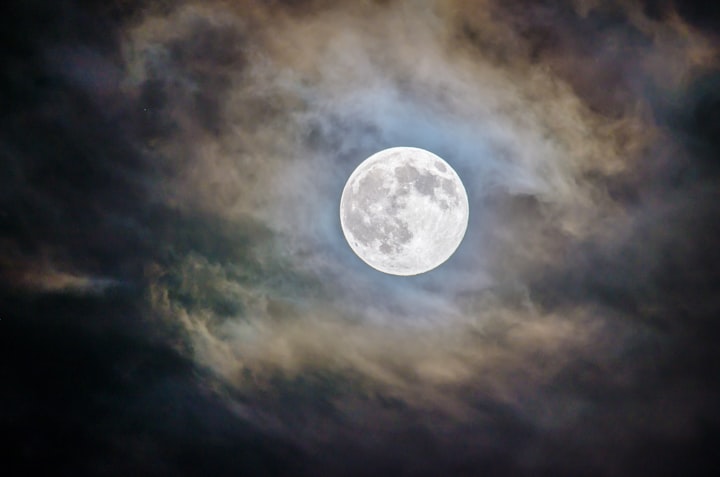When is the Full Moon?
A Guide to Understanding and Observing Lunar Phases

The night sky, adorned with stars and planets, has long captivated human imagination. Among the celestial wonders, the full moon stands out as a radiant and mesmerizing spectacle. Its ethereal glow has inspired poets, artists, and scientists for centuries. But when exactly does this enchanting lunar event occur? In this article, we'll explore the science behind the full moon and learn how to predict its dates throughout the year.
Understanding Lunar Phases:
Before we dive into the timing of the full moon, it's essential to understand the concept of lunar phases. The moon's changing appearance in the sky is the result of its orbit around Earth. As the moon moves, the relative positions of the sun, Earth, and the moon create different lighting conditions, leading to distinct phases.

There are eight primary lunar phases, with the full moon being one of them. These phases include the new moon, first quarter, waxing crescent, waxing gibbous, full moon, waning gibbous, third quarter, and waning crescent. Each phase has a unique appearance, and the full moon is characterized by the moon appearing as a complete, fully illuminated circle.
The Astronomical Mechanism Behind the Full Moon:
The full moon occurs when the moon is positioned directly opposite the sun as observed from Earth. In this alignment, the sun's light fully illuminates the side of the moon facing us. This results in a brilliant, round moon hat casts a radiant glow across the night sky.

The moon orbits Earth in an elliptical path, and this ellipticity, along with the tilt of the moon's orbit, can lead to slight variations in the moon's apparent size and brightness during full moons. However, these differences are often subtle and not easily discernible to the naked eye.
The Lunar Cycle:
The lunar cycle, which is the time it takes for the moon to complete one orbit around Earth, lasts approximately 29.5 days. This cycle encompasses all the phases of the moon, with the full moon occurring roughly in the middle of this period.

Understanding the lunar cycle is crucial for predicting the timing of full moons throughout the year. While it might seem that the full moon should occur on the same day each month, it doesn't. The moon's cycle doesn't perfectly align with our calendar months, leading to variations in the dates of full moons.
The Variability of Full Moons:
The timing of full moons can vary from month to month due to the moon's elliptical orbit. This means that some full moons may appear slightly larger and brighter than others. Occasionally, we witness what's known as a "supermoon," which occurs when a full moon coincides with the moon's closest approach to Earth in its orbit.

Conversely, when a full moon occurs at the farthest point in its orbit from Earth, it's called a "micromoon."
Supermoons and micromoons add an extra layer of intrigue to our observation of the full moon, making some full moons more spectacular than others.
Additionally, there's a phenomenon called a "blue moon." While the term "blue moon" is popularly associated with a rare event, it actually refers to the second full moon in a calendar month with two full moons. These "blue moons" occur approximately once every 2.7 years, adding an element of surprise to the lunar calendar.
Full Moons Around the Year:
To determine when a full moon will occur on a specific date, it's necessary to consult a lunar calendar or an astronomical almanac. Full moons can happen in any month, and their dates shift each year. Here's a general idea of full moons' occurrence in different months:

January to April:
Full moons are distributed throughout the early months of the year, often providing spectacular views during cold winter nights.
May to August:
These months typically feature full moons that illuminate warm summer nights, making them a favorite for stargazers.
September to December:
As the year draws to a close, full moons once again become prominent in the night sky, sometimes coinciding with festive holiday seasons.
The exact dates of full moons each year are determined by astronomical calculations, so it's advisable to check a reliable source for precise information if you plan to witness a specific full moon.
Cultural and Folklore Significance:
The full moon has captured the human imagination throughout history and has played a significant role in various cultures and folklore. Here are some examples of the cultural and mythological significance of the full moon:

Myths and Legends:
Many cultures have myths and legends related to the full moon. Werewolf legends, for instance, are often tied to the idea that the full moon triggers transformations.
Religious Observations:
In some religions, full moons hold spiritual significance and mark important holidays or rituals. For example, the Mid-Autumn Festival in Chinese culture is celebrated during a full moon.
Agricultural Traditions:
Traditional farming practices in some cultures are closely linked to the lunar calendar, with planting and harvesting schedules coordinated with lunar phases.
Human Behavior:
The idea that the full moon can influence human behavior is a common belief, even though scientific studies have largely debunked this notion. Nevertheless, the concept of "lunar lunacy" persists in popular culture.
Predicting Full Moons:
Astronomers and scientists use precise calculations to predict the dates and times of full moons with remarkable accuracy. These predictions are based on the moon's orbit and the position of the sun and Earth. Today, lunar calendars and astronomical software make it easy for enthusiasts to plan moon-watching events and stargazing activities well in advance.
Full Moon Photography and Observation:
Observing and photographing the full moon can be a captivating hobby. To make the most of your lunar observation experiences, consider the following tips:
Use a Telescope or Binoculars:

A telescope or a pair of binoculars can enhance your view of the moon's surface, revealing craters, mountains, and other intriguing details.
Capture Moonrises and Moonsets:
Full moons near the horizon can appear larger and more impressive. Photographing the moon as it rises or sets can yield stunning images.
Experiment with Exposure:
When photographing the moon, adjust your camera's exposure settings to capture details on the moon's surface while maintaining a balanced exposure for the surrounding sky.
Plan Ahead:
Use lunar calendars and astronomical apps to plan your moon-watching sessions. Check the weather forecast to ensure clear skies for optimal viewing conditions.
The Influence of Full Moons:
While there are many myths and beliefs surrounding the full moon's influence on human behavior, scientific studies have not found conclusive evidence to support these claims. The idea of "lunar lunacy" remains a topic of debate, with most experts attributing fluctuations in human behavior to other factors.

However, it's undeniable that the full moon's beauty and radiance have a profound impact on our emotions and imagination. Whether it's the inspiration for a romantic moonlit walk or a moment of wonder during a quiet night of stargazing, the full moon continues to be a source of fascination.
In the realm of celestial phenomena, few events rival the beauty and mystique of the full moon. Its radiant glow and enchanting presence in the night sky have made for lovely weather.
About the Creator
Md Zia Haider
Hello friends! I'm a dedicated writer who wrote many blogs and articles on online. If you enjoy my work, I'd greatly appreciate your support. Please consider subscribing and giving a thumbs-up to my articles. Thanks to all for your support!






Comments (1)
this is so amazing why cant you join my friends and read what I have just prepared for you?